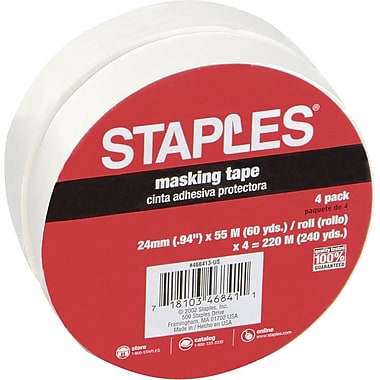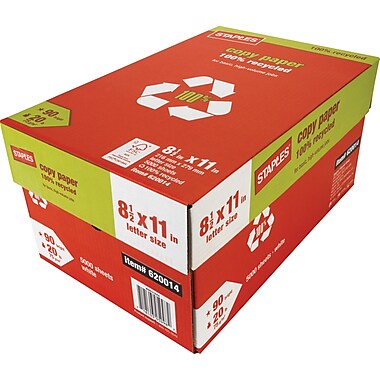Source: Staples.
An increasing number of distributors are fighting for their survival in a changing competitive landscape and Staples (SPLS +0.00%), the largest distributor of office products globally, isn't immune to such competitive threats. Staples faces increasing challenges from not only Amazon.com (NASDAQ:AMZN) but also Office Depot (NYSE: ODP) following its merger of tof its direct competitors and online retailers free of the cost burdens associated with bricks and mortar players.
World's largest office product company
Given that office products are simply commodities that companies can defer purchasing for a prolonged time period, Staples doesn't have the luxury of differentiating its products from those of its competitors. Instead, Staples' competitive strengths lie with its excellent operating capabilities and economies of scale.
In terms of Staples' track record as an operator, its financial results speak for themselves. Staples has remained profitable in nine out of the past 10 years and has maintained its gross margins within a narrow 26%-28% range over the same period. Furthermore, it has delivered positive free cash flow and rewarded shareholders with dividends in every year since fiscal 2005.
With respect to economies of scale, Staples enjoys a significant cost advantage over its direct office products competitors as the largest office product company globally, given that it boasts a larger revenue base to spread its fixed costs associated with store rental and delivery. As a comparison, Office Depot, prior to its merger, only achieved about half the revenues of Staples.
However, Staples' competitive advantages are fast dissipating in light of a larger direct competitor in the form of an enlarged merged entity between Office Depot and OfficeMax, and the threat posed by Amazon to its delivery business.
Merger of its two largest direct competitors
Following the completion of the merger between OfficeMax and Office Depot in November 2013, the "new" Office Depot boasts combined trailing 12 months revenues of approximately $17 billion, narrowing the gap between itself and Staples, which achieved a top line of $23 billion in the most recent financial year. That suggests that Staples' edge over Office Depot, in terms of economies of scale, will be reduced to a large extent as compared with pre-merger days.
Office Depot expects to recognize annual cost synergies in the upper half of the estimated $400 to $600 million range by the third year of the merger. Firstly, Office Depot can reduce purchasing costs by removing duplicate SKUs and overlapping suppliers. Secondly, it can improve on transportation and delivery efficiencies by delivering more products on a per trip basis. Thirdly, advertising budgets and back office operations can be shared across a larger combined revenue base.
While the merger has a positive effect in terms of removing some of the oversupply inherent in the office products market, it may also exacerbate price competition. Office Depot, with a lower cost structure going forward, has the ability to lower prices further and reduce the overall profitability of the industry, including Staples.
Source: Staples.
Delivery business under siege
In the most recent financial year, Staples derived 48%, 35%, and 17% of its revenues from U.S. physical and online sales, U.S. commercial/delivery business and international operations, respectively. In particular, Staples' delivery business faces serious threats from Amazon Supply. Amazon, already the largest business-to-consumer (B2C) retailer then, entered the business-to-business (B2B) space with Amazon Supply in April 2012.
Amazon Supply boasts several characteristics that make it a formidable opponent for Staples. Firstly, Amazon Supply claims to stock in excess of 750,000 SKUs, making it one of the world's largest business products suppliers. As a comparison, Staples.com currently has an assortment of half a million products and plans to increase the number of SKUs to 1.5 million by this year.
Secondly, Amazon Supply positions itself as an "every day low prices" retailer, with a competitive cost structure not inferior to that of Staples. In particular, Amazon is spared of the fixed cost rental burden associated with retail stores.
Thirdly, Amazon Supply is also competitive in terms of customer service. It offers a 365-day return policy and free two-day shipping on eligible orders in excess of $50.
In response to the threat from online retailers such as Amazon Supply, Staples has been steadily growing its e-commerce business, which currently accounts for close to 10% of its total revenues. Staples has recently launched a revamp of its e-commerce website Staples.com; expanded multi-channel capabilities with in-store kiosks; and introduced new and improved mobile apps. Initial results have been positive, with sales from Staples.com growing by 10% in the fourth quarter of 2013.
However, there are trade-offs involved with Staples' online push. Staples' online business boasts lower margins than its brick & mortar business, suggesting its profitability will be affected as its online business continues to grow.
Foolish final thoughts
While acknowledging Staples has had a good financial track record historically, its future is fraught with risks and uncertainties. Staples doesn't have significant cost advantages over both Office Depot and Amazon; and it also faces potential margin compression with the shift from physical to online sales. Investors would be best advised to avoid Staples and consider alternative investment opportunities outside of the office supply industry.









